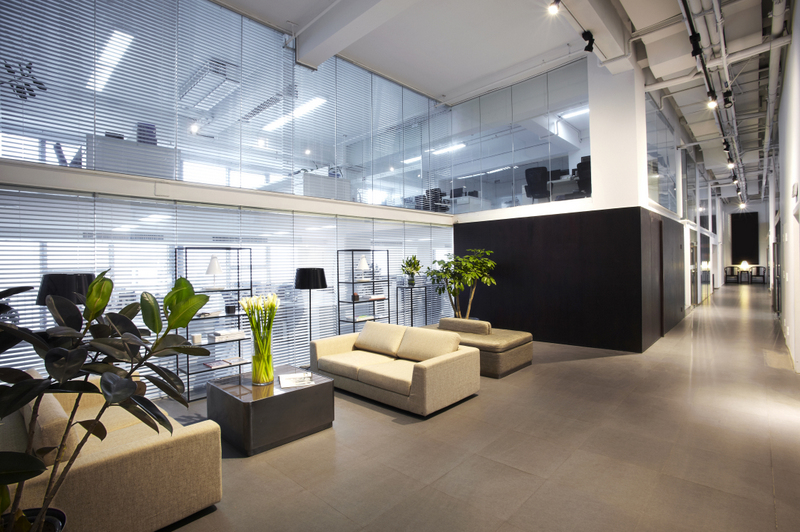
A brief history of interior design trends over the past 50 years
Furniture designers ARAM trace the history of interior design
Decorating a home can be a tricky process. Most home-owners fall short with choosing the right furniture, wallpaper and structures in their own homes. Thankfully, interior designers have an eye for things a home-owner and even some builders can’t spot. Year after year, the shifting trend in fashion has an impact on design that has given us some very distinctive trends.
The 60s Peace and love
The hippy movement in the 60’s had a huge effect on interior design. Floral print and paisley fabrics were used frequently in homes. The focus on being young and hip meant that rooms were generally uncluttered and brightly coloured to emphasise the break from a more conventional era.
Furniture from the era was often custom-built and made with organic materials. Kitchens featured wood panelling. Carpets were generally shag, for a comfortable barefoot experience. Some designers still focus on the warmth and freedom promoted by this era. Colourful appliances and walls painted warm colours were the in thing. Popcorn ceilings were also common-place in this era.
The 70’s Nature blooms
The 1970’s saw more geometric shapes infiltrate the already colourful homes of the 60s. Nature was brought indoors and house-plants in pots were often displayed in the house. Shag carpets were big business in this era, with various colours of all kinds throughout the home even in the kitchen.
Mellow, earthy tones and natural hues such as golds, greens and browns were introduced to the home for a natural feel. The invention of microwaves and other devices alongside the colour revolution made the kitchen a focal point of the home. Coloured appliances brought life to a previously non-flashy room. This trend is still evident in our decade, with colourful plastic appliances used in modern homes.
The 80’s Out goes the carpet
The invention of non-wax floors meant laminate flooring became popular in a big way. The design of homes changed to incorporate bigger areas, creating kitchen/living room combinations. Houses increased in size thanks to the 80s being a time of profit and achievement as well as contractors figuring out how to maximise buildings in minimal space.
The floral designs of the 60’s made a comeback but had more muted colours and featured autumn tones. Salmon, teal, peace and green were common palettes of the decade. Frosted glass became a common feature to compliment laminate flooring and the age of shag carpets came to a definitive end.
The 90’s Technology forces change
The 90’s saw trends heading towards comfort, technology and livability. Durability, individualism and minimalism saw the scrapping of frilly, flowery designs. The rise of electronics saw stands, desks and shelves being installed in living spaces and wooden flooring became hugely popular.
Modern plumbing was in full effect in the 90s. Homes that had previously existed without the luxury of running hot water were now reinvented as fully functional living spaces. Thanks to new technology with luxury skylights, cabinets, wardrobes and home appliances, the 90’s revolutionised how the home was used.
The 2000s The future is here
The 2000’s saw many appliances once thought of as science fiction become commonplace. Home offices now became computer-centric, with design focusing on clean minimalism. Décor became centred on balanced design, with appliances adopting uniform looks (such as full stainless kettles, microwaves and cutlery) as well as dark marble-topped kitchens.
Houses became smaller in the wake of a global recession, so design was often focused on getting the most out of a space. Minimalism meant you could squeeze all the necessary furniture into a room without ruining a space. Slim-line TV’s, laptops and now tablets spelled the end of the popular entertainment centres’ built into homes in the 90s.
Where are we headed?
From the garish colours of the 60’s to the clean modernism of the 2000’s, design has changed heavily over the years. However, recurring elements are recycled as Retro’ and designers are frequently looking back for inspiration. Design trends post 2010 sees a lot of vintage’ aesthetic creeping back into homes. Gardens with flowerpots made from steel buckets, kitchens with brightly coloured appliances and crockery and rooms that mix wood and synthetic materials are all being employed by interior designers to create bright, cosy homes for this generation.
.
More about the history of ARAM
Zeev Aram opened his first showroom in 1964, a small, white space on London’s Kings Road. At the time, he recalls, you could buy the odd piece of Eames but generally, the UK was a modern furniture desert. And here was the work of Castiglioni, Breuer, and Le Corbusier, for the first time available to the public to buy and put in their own homes. Now ARAM is one London’s best modern furniture stores, selling only genuine, authorised, original designs.
Latest news

29th April 2025
Senior pledges to ‘bee’ part of the solution with new biodiversity initiative
Senior Architectural Systems has installed its first on-site beehive, marking another step forward in its commitment to sustainability and biodiversity.
Posted in Articles, Building Industry News, Building Products & Structures, Building Services, Curtain Walling, Doors, Glass, Glazing, Innovations & New Products, news, Restoration & Refurbishment, Retrofit & Renovation, Sustainability & Energy Efficiency, Walls, Windows
29th April 2025
West Fraser range delivering key benefits for South-East carpentry company
An experienced carpenter and building site manager who has recently set up his own company is using high performance panel products from the West Fraser range.
Posted in Articles, Building Industry News, Building Products & Structures, Building Systems, Case Studies, Garden, Restoration & Refurbishment, Retrofit & Renovation, Sustainability & Energy Efficiency, Timber Buildings and Timber Products
29th April 2025
CPD Courses Available Online From Ecological Building Systems
Ecological Building Systems, a leading supplier of natural building products for sustainable construction, has revealed its comprehensive CPD programme for the year ahead.
Posted in Articles, Building Industry Events, Building Industry News, Building Products & Structures, Building Services, Continuing Professional Development (CPD's), Information Technology, Innovations & New Products, Insulation, Restoration & Refurbishment, Retrofit & Renovation, Seminars, Sustainability & Energy Efficiency, Training, Walls, Waste Management & Recycling
29th April 2025
WindowBASE launches new prospect databases at FIT Show
Visit WindowBASE at the FIT Show to see first-hand how it helps companies find new customers – the company is launching an easy-to-use, intuitive platform on Stand G16 at the NEC Birmingham from 29th April – 1st May.
Posted in Articles, Building Industry Events, Building Industry News, Building Products & Structures, Building Services, Doors, Exhibitions and Conferences, Glass, Glazing, Information Technology, Innovations & New Products, Posts, Publications, Research & Materials Testing, Restoration & Refurbishment, Retrofit & Renovation, Windows
 Sign up:
Sign up: